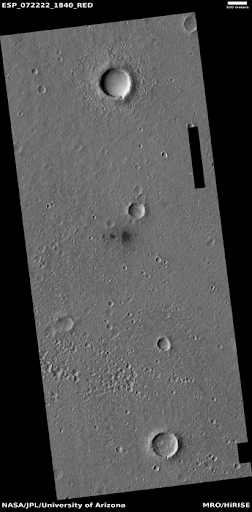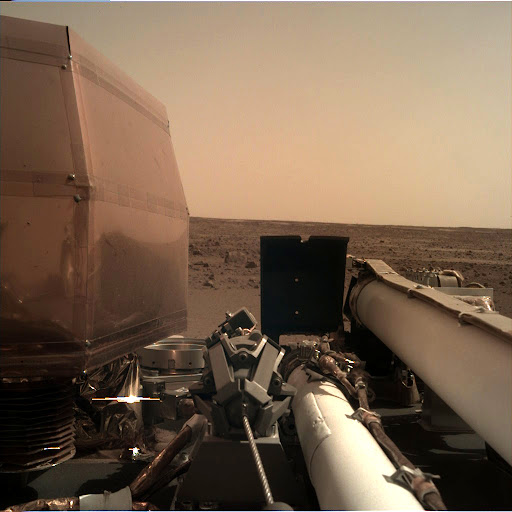By Raquel Santos
An international team of researchers located four new impact craters on the surface of Mars. Using a seismometer and images captured by the Mars Reconnaissance Orbiter, the team was able to pinpoint the location of these craters.

(Image of the four new craters by NASA/JPL-Caltech/UArizona)
This is the first time investigators were able to capture impact dynamics on Mars. Such information might hold valuable clues regarding the planet’s atmosphere and internal structure. It might also give us some insight into how our planetary neighbor formed and evolved over time.
Martian Meteoric Exploration
Mars is located nearby our solar system’s asteroid belt. The proximity between the two and Mars’ flimsy atmosphere makes it vulnerable to impacts by space rocks. Even though we know the repercussions of a meteoroid’s impact here on Earth, researchers were never quite able to figure out impact dynamics on Mars.
“Meteoroids and other projectiles in space can change the atmosphere and surface of any planet through impact,” said Nicholas Schmerr, a co-author of the paper. “We’ve seen this on Earth, where these objects can hurtle through the atmosphere, hit the ground, and leave behind a crater. But before this, we’ve never been able to capture the dynamics of an impact on Mars, where there’s a much thinner atmosphere.”
To investigate the martian planet’s structure, crust, and impact activity NASA launched the InSight lander. It touched down on the Elysium Planitia in late 2018 and began recording data, including seismic waves.
Researchers examined those recordings to see if they between 2020 and 2021 to see if they could find any recent craters produced by incoming meteoroids. They expected to detect between one and 100 impacts every five Earth years.

First images of Elysium Planitia from InSight’s Instrument Deployment Camera (Source: Wiki, by NASA/JPL-Caltech)
An Impactful Research
Researchers explored the acoustic and seismic waves triggered by the impact of space projectiles using SEIS (Seismic Experiment for Interior Structure), an instrument embedded in InSight. Determining how fast these waves traveled through Mars’ air and rock, researchers estimated the location of four different craters that they decided to explore in detail.
To confirm their estimations, they compared them to visual data provided by Nasa’s Mars Reconnaissance Orbiter.
“These seismic measurements give us a completely new tool for investigating Mars, or any other planet we can land a seismometer on,” said planetary geophysicist Bruce Banerdt of NASA’s Jet Propulsion Laboratory, the InSight mission’s principal investigator.
The combination of the images and wave data provided investigators with a way to study the martian atmosphere and its interior structure. A better understanding of Mars’ seismology will provide valuable information regarding the planet’s core, heating processes, and underlying tectonic activities.
Planetary Structure and Evolution
The findings from this research will likely impact different planetary studies, as they’ll allow researchers to use seismic activity data to investigate other planets across our entire solar system.
“We can connect a known source type, location, and size to what the seismic signal looks like. We can apply this information to better understand InSight’s entire catalog of seismic events, and use the results on other planets and moons, too,” said Brown University planetary scientist Ingrid Daubar, a co-author of the study published in the journal Nature Geoscience.
The results could help researchers understand how often new impacts occur in the inner solar system and how they impact each planet’s atmosphere and interior. Combining acoustic and seismic wave recordings with images might also be the first step in determining a planet’s core solidity and heating processes.
Researchers also consider these findings as a way to better understand planetary formation and evolution. “Studying how impacts work on Mars is like opening a window into the fundamental processes of how terrestrial planets form,” Schmerr said. “All inner solar system planets share this commonality, including Earth.”
The original article is called “Newly formed craters on Mars located using seismic and acoustic wave data from InSight” and can be found in Nature Geoscience.
Sources:
